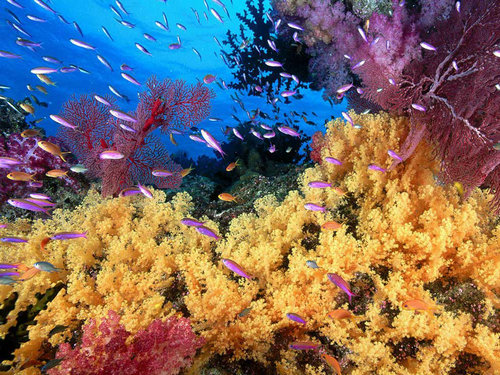Great barrier relief from storms
china.org.cn / chinagate.cn, May 14, 2014 Adjust font size:
Coral reefs may offer a comparable but "significantly cheaper" alternative to artificial coastal defenses to protect coastal cities in many parts of the world from incoming waves, storms and rising seas, an international team of researchers said Tuesday.
 |
|
Coral reefs may offer a comparable but "significantly cheaper" alternative to artificial coastal defenses to protect coastal cities in many parts of the world from incoming waves, storms and rising seas. [File photo] |
"Coral reefs can be an effective first line of defense and these benefits are important for many nations," the researchers, led by lead marine scientist of the Nature Conservancy Michael Beck, wrote in the British journal Nature Communications.
The researchers performed a meta-analysis of 27 previous studies of how coral reefs around the world dissipate wave energy, conducted in conditions ranging from normal surf to hurricane- level waves.
They found that coral reefs reduce wave energy that would otherwise impact coastlines by an average of 97 percent.
The reef crest, or shallowest part of the reef where the waves break first, dissipates 86 percent of wave energy on its own, they said.
"It is a huge reduction," said study co-author Fiorenza Micheli, a professor of biological sciences at Stanford University, adding that the effects were comparable to artificial breakwaters engineered specifically to dissipate wave energy.
Restoring and recovering reefs also makes economic sense. The median cost for building artificial breakwaters is 19,791 U.S. dollars per meter, compared to 1,290 dollars per meter for coral reef restoration projects, they said.
"On average, the costs of the restoration projects were significantly cheaper than costs of building tropical breakwaters, " the researchers wrote. "As living structures, reefs have the potential for self-repair and thus lower maintenance costs as compared with artificial structures."
The researchers estimated that about 197 million people worldwide can receive risk reduction benefits from coral reefs alone or may have to bear higher costs of disasters if the reefs are degraded.
These are the people in the villages, towns and cities in low- lying, risk-prone coastal areas fewer than 10 meters above sea level and within 50 kilometers of coral reefs, mostly in Indonesia, India, and the Philippines, they said.
Currently, about two-thirds of the world's coral reefs were considered threatened by human activities, increasing ocean temperatures and acidification.
"While there are many concerns about the future of corals reefs in the face of climate change, there are still many reasons for optimism about the future of coral reefs particularly if we manage other local stressors such as pollution and development," Micheli added.

